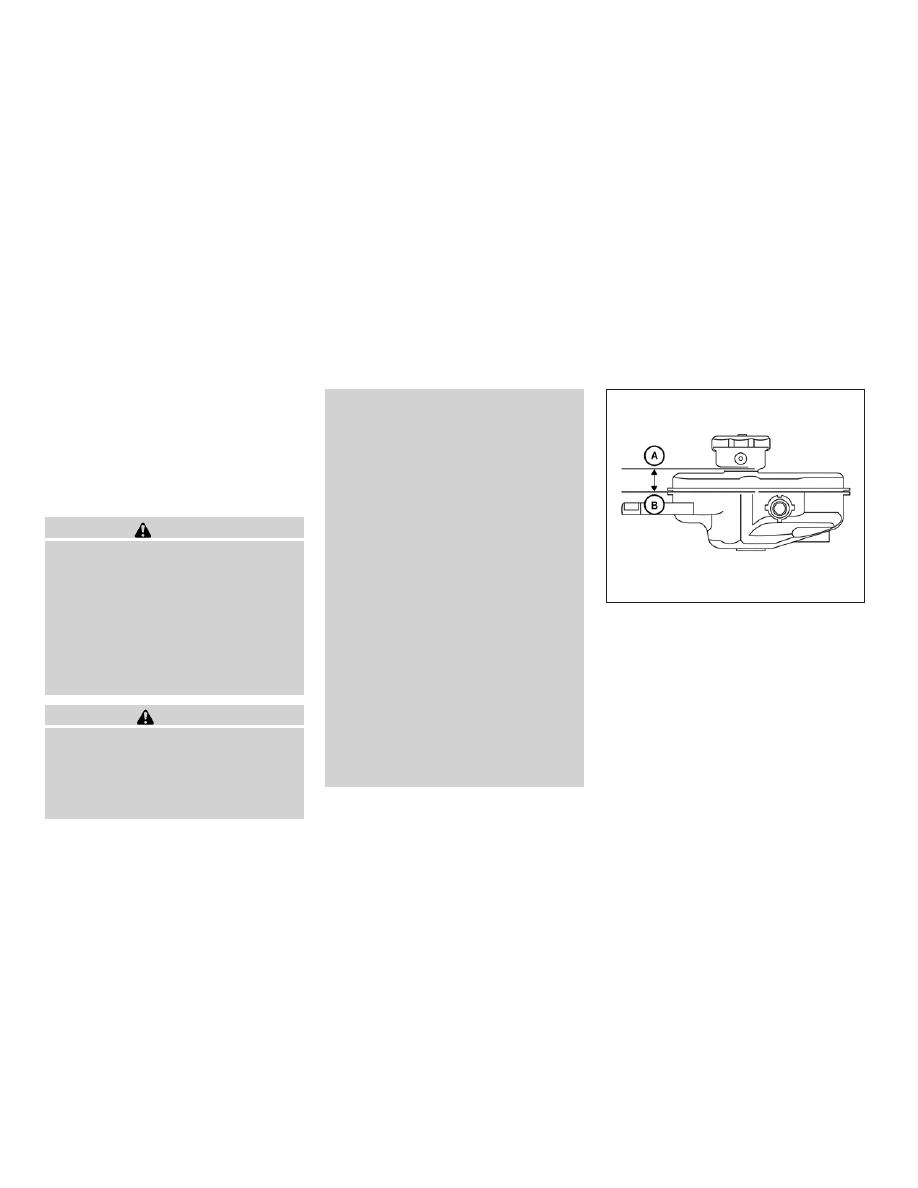Nissan Murano Hybrid (2016 year). Manual - part 23

The inverter cooling system is filled at the factory
with a pre-diluted mixture of 50% Genuine
NISSAN Long Life Antifreeze/Coolant (blue) and
50% water to provide year-round antifreeze and
coolant protection. The antifreeze solution con-
tains rust and corrosion inhibitors. Additional in-
verter cooling system additives are not neces-
sary.
WARNING
● Never remove the coolant reservoir cap
when the engine and inverter are hot.
Wait until the engine and inverter cool
down. Serious burns could be caused
by high pressure fluid escaping from
the reservoir.
● The inverter reservoir is equipped with a
pressure type cap. To prevent engine
and inverter damage, use only a Genu-
ine NISSAN inverter reservoir cap.
CAUTION
● Never use any additives in the coolant
such as radiator sealer in the cooling
system. This may cause damage to elec-
trical equipment such as the motor and
inverter, as well as the engine and
transmission.
● When adding or replacing coolant, be
sure to use only a Genuine NISSAN
Long Life Antifreeze/Coolant (blue) or
equivalent. Genuine NISSAN Long Life
Antifreeze/Coolant (blue) is pre-diluted
to provide antifreeze protection to -34°
F (-37° C). If additional antifreeze pro-
tection is needed due to weather where
you operate your vehicle, add Genuine
NISSAN Long Life Antifreeze/Coolant
(blue). The use of other types of coolant
solutions other than Genuine NISSAN
Long Life Antifreeze/Coolant (blue) or
equivalent, may damage the inverter
cooling system.
● The life expectancy of the factory-fill
coolant is 125,000 miles (200,000 km) or
15 years. Mixing any other type of cool-
ant other than Genuine NISSAN Long
Life Antifreeze/ Coolant (blue), includ-
ing
Genuine
NISSAN
Long
Life
Antifreeze/ Coolant (green), or the use
on non-distilled water will reduce the
life expectancy of factory-fill coolant.
For additional information, refer to the
NISSAN
Service
and
Maintenance
Guide.
CHECKING INVERTER COOLANT
LEVEL
Check the coolant level in the reservoir when
the engine and inverter are cold. The coolant
level should be between the MIN level
䊊
B
, add
coolant to the MAX level
䊊
A
.
If the inverter cooling system frequently
requires coolant, have it checked. It is rec-
ommended you visit a NISSAN dealer for
this service.
NJE0002
INVERTER COOLING SYSTEM
8-10
Maintenance and do-it-yourself